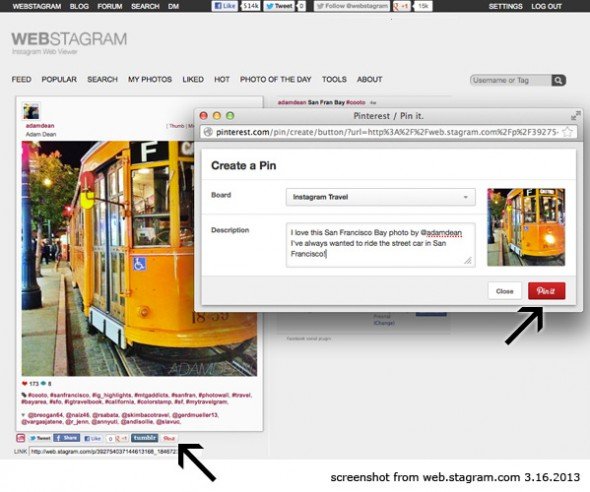
The first one was, if you remember early iPhone days, the early mobile networks were really slow, and it was impossible to load a website. In the early days of Instapaper in that 2008 App Store world, Instapaper solved three key pain points, consumer pain points.
PINTEREST INSTAPAPER OFFLINE
It was the first time where you had this combination of bookmarking experience, this text parser that would extract the important parts of articles, and then also the mobile application where it was kind of all the articles were saved offline and kind of available to you wherever you were. Then in August 2008, he launched, with basically the App Store launch, he launched Instapaper for iOS, which leveraged the bookmarking service and the text parser to kind of create Instapaper experience that kind of we’re familiar with today.


If you’ve used Instapaper, you’re pretty familiar with this, it’s one of the core value propositions. The test parser would take an article from a website, extract just the text and the images and provide just the reading view and experience. Coming into like March or April 2008, he launched the reading mode for Instapaper using its text parser. You could save articles using a bookmarklet, and all it was was a website. Marco launches this bookmarking service called Instapaper, and it’s essentially just a website and a bookmarklet. It had quite a bit of fanfare early on, even though it was just a bookmarking service at the time.Ĭraig Cannon – Yeah, but it was early days App Store?īrian Donohue – This is even pre App Store. My impression was he would work nights and weekends. Marco, beside Instapaper, was previously known for being the CTO of Tumblr and Instapaper was kind of his side project that he worked on while he was at Tumblr.

Instapaper was started by a single guy named Marco Arment, and he built the entire product and service and operated it from 2008 to 2013. Could you just explain that?īrian Donohue – Sure. Alright Brian, Instapaper has a very curious lineage and history. You can find him on Twitter Alright, here we go. Brian’s President of Instapaper and a Product Engineering Manager at Pinterest.

Speaking of I’d use it on my Google Home to listen to news if that was a skill.ĥ7:20 – Brian Kim asks – Any growth hacks that worked well?ĥ9:45 – Gustaf Alströmer asks – How does it make time for focused time to catch up on everything he saves? What are his best productivity hacks related to this?Ĭraig Cannon – Hey, how’s it going? This is Craig Cannon and you’re listening to Y Combinator’s podcast. You can find him on Twitter – The history of Instapaperġ4:15 – Transitioning from paid to freemiumġ9:00 – Pinterest’s acquisition of InstapaperĢ8:45 – Working on Instapaper within Pinterestģ2:00 – Spinning Instapaper out of PinterestĤ2:15 – Jareau Wadé asks – What types of product integrations could Pinterest have done with Instapaper?Ĥ9:45 – Ryan Hoover asks – I’m curious how he and the team balance simplicity with new feature development/product expansion.ĥ4:00 – Raymond Durk asks – I love the rapid reading mode but would also love a voice enabled mode where the Google Assistant or Siri reads it. Brian Donohue is President of Instapaper and a Product Engineering Manager at Pinterest.


 0 kommentar(er)
0 kommentar(er)
